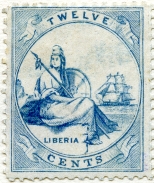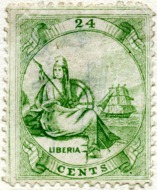In this section you can find all basic stamps and souvenir sheets issued by Liberia through 1996.
If should be seen as a help for identification; therefore, stamps are organized mainly by
design regardless of catalog number or intended purpose, meaning that regular, official and airmail
stamps including surcharges are grouped together.
Just mark the checkboxes to the right and press ‘Submit Selection’.
You can select all groups at once, but loading may take a while!
Below each stamp are given its Scott catalog number to the left, date of issue to the right, and information about the catalog value in the middle (mint - used). Values are mainly based on Scott and Michel 2012 catalogs, and are coded by falling into one of ten price ranges, indicated by the number of diamonds: “♦” = below 30c, “♦♦” = 30c..99c, “♦♦♦” = $1..$2.99, “♦♦♦♦” = $3..$9.99, “♦♦♦♦♦” = $10..$29, “♦♦♦♦♦♦” = $30..$99, “♦♦♦♦♦♦♦” = $100..$299, “♦♦♦♦♦♦♦♦” = $300..$999, “♦♦♦♦♦♦♦♦♦” = $1000..$2999, “♦♦♦♦♦♦♦♦♦♦” = $3000 and above. Catalog prices for many Liberian stamps are dubious, but at least this should give you a hint if some stamp is waste paper or your ticket to Rio!
Stamp images have a resolution of 150 dpi, except for souvenir sheets which have 100 dpi. Thus, on the average 96 dpi monitor souvenir sheets will show close to their natural size, while stamps are enlarged by 50 percent.
 Crosses and Circles
Crosses and Circles
 Rosette
Rosette
In general, Liberia's classic postage stamps were printed on paper without dedicated watermark – some are known with paper-makers watermark – but there are two exceptions: most of the early Waterlow & Sons issues are watermarked “Rosette” (not the triangle stamps), and all issues printed in Germany are watermarked “Crosses and Circles”.





























